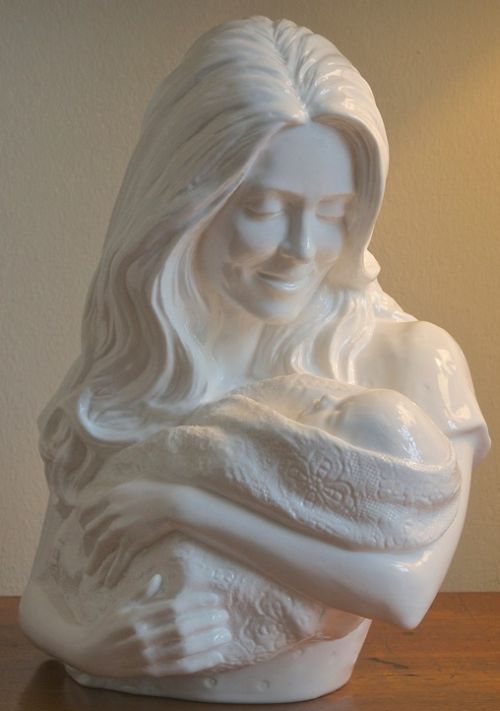The Fine China Guide:
Master Sculptor Peter Holland's Definitive Resource
Welcome to the fine china inheritors most comprehensive resource - that also happens to provide a haven for enthusiasts, wheeler-dealers and collectors alike.
My name is Peter Holland, master sculptor for prestigious fine china brands like Royal Worcester. I am here to record and share the knowledge I have gleaned over a long career working within this incredible and beautiful form of industrial art.
My mission is to help you become enlightened in the identification, valuation and understanding, not to mention the stories behind the fine china in your hot hands.
Remember, fine china can easily stick around way longer than us - if we treat it well and nurture its delicacy.
My Story:
My journey began in a sculptor's studio, crafting figurines for brands that defined an era. This hands-on experience gave me a unique insight into the artistry and history of fine china. Now, I want to share that passion with you.
My Story 2.0 - From the Studio
Alongside my ongoing fine-china sculpture and restoration work, I continue to explore new creative directions.
→ Recent original vintage-style travel & fantasy posters here
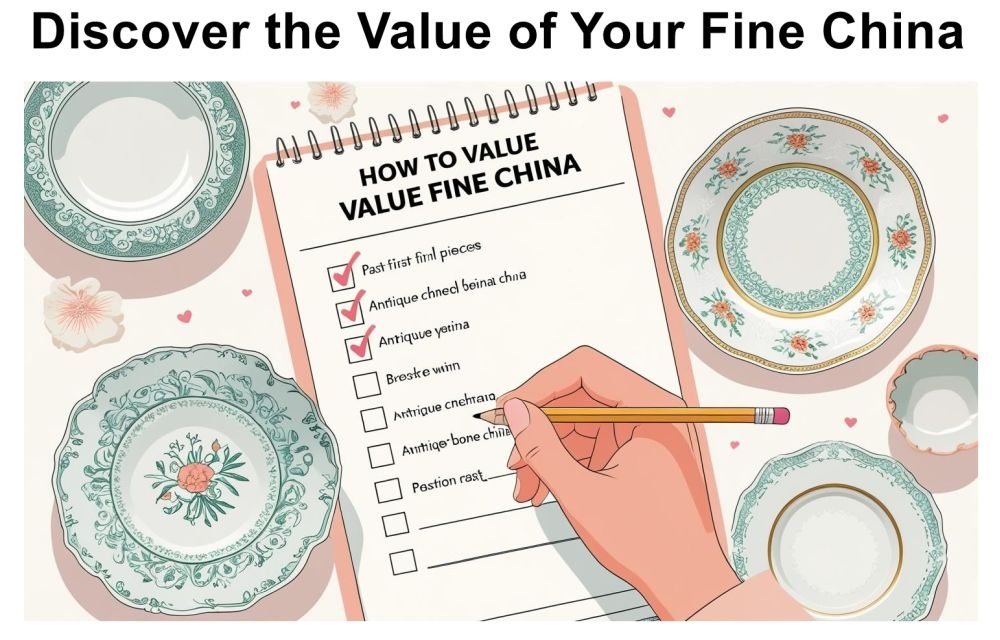
Inherited a china set?... Download my free 7-point checklist to instantly assess its potential value.
Explore Our Core Topics
Selling Your Fine China
Our expert guide helps inheritors and dealers navigate the best channels to sell fine china online for maximum profit.
Valuing Your Fine China
Get a free, no-obligation assessment of your fine china to understand its true market value.
Identifying Marks & Brands
Decipher the hidden meanings behind your china's marks to discover its origin and history.
Collecting & Sculpting
Explore the artistry and craftsmanship behind your favorite figurines, curated by a master sculptor.
Buying Fine China
Discover expert tips on sourcing and purchasing new and antique fine china pieces for your collection.
Brands of Fine China
A comprehensive guide to the history and products of the world's most prestigious fine china brands.
The Journey from Clay to China: My Life as a Master Sculptor
When people see a beautiful Royal Worcester figurine or an elegant Coalport piece on their mantelpiece, they rarely think about the journey that brought it there. Let me take you behind the scenes of the world I've inhabited for decades – the fascinating process of creating master sculptures for Britain's most prestigious china companies.
The Birth of an Idea
It all begins with a spark – sometimes a character from literature, a beautiful dancer, or perhaps a moment in history that captures my imagination. Working closely with the art directors at companies like Royal Doulton and Royal Worcester, we'll discuss the vision, the market, and what will resonate with collectors worldwide. These conversations often happen over countless cups of tea, naturally.
Sculpting the Master
In my studio, surrounded by tools that would be familiar to sculptors from centuries past, I begin with a simple block of clay. This isn't just any clay – it's a specially prepared modelling clay that holds fine detail beautifully. Every fold of fabric, every curl of hair, every subtle expression must be perfect because this original sculpture, my "master," will be the template for potentially thousands of pieces.
The process is meditative yet demanding. I might spend weeks on a single figurine, building up layers, refining features, and ensuring that every angle tells the story I want to convey. The clay must be kept at just the right moisture level – too dry and it cracks, too wet and it won't hold the intricate details that make these pieces special.
From Master to Mould
Once I'm satisfied with my master sculpture, it embarks on a journey I've witnessed hundreds of times but still find magical. The skilled mould-makers at the factory carefully study every curve and undercut. They create what we call a "case mould" – essentially a negative impression of my work, usually made in several interlocking sections to capture all those fiddly bits like outstretched arms or flowing skirts.
My original master, having served its purpose, typically remains in the factory's archives. Some masters I've created decades ago still sit on shelves, silent witnesses to the thousands of their offspring that have graced homes around the world. It's rather like being a proud grandfather to an enormous family you'll never meet.
The Alchemy of Slip Casting
Here's where the real magic happens, and frankly, it never gets old watching this ancient craft in action. The skilled craftspeople pour liquid clay – what we call "slip" – into those moulds I mentioned. This slip is like a perfectly balanced recipe: the right clay, the right water content, the right consistency. Too thick and it won't capture the fine details; too thin and the walls will be fragile.
The slip sits in the mould just long enough for the plaster to draw out moisture from the edges, forming the walls of the piece. Timing is everything – leave it too long and the piece becomes thick and clumsy; too short and it won't have the strength to survive. When the moment is right, the excess slip is poured away, leaving behind a perfect hollow replica of my original sculpture.
The Finishing Touch
After careful drying and the initial firing, my sculpture is ready for the decorators' artistry. These skilled painters bring colour and life to what I created in clay, following traditional techniques passed down through generations. Each piece is hand-painted, making every figurine slightly unique – rather like snowflakes, no two are exactly alike.
The Legacy Lives On
What strikes me most about this process is how it connects past and present. The techniques I use today would be recognisable to sculptors from the 18th century, yet each piece carries contemporary relevance. When I see one of my figurines in someone's home, carefully displayed and obviously cherished, I'm reminded why I fell in love with this craft in the first place.
Every master sculpture I create is a small act of faith – faith that somewhere, someone will connect with the story I've tried to tell in clay. In our digital age, there's something wonderfully reassuring about this ancient dance between sculptor, craftsperson, and collector.
Long may it continue.

Inherited a china set?... Download my free 7-point checklist to instantly assess its potential value.
Fine China Sticks Around
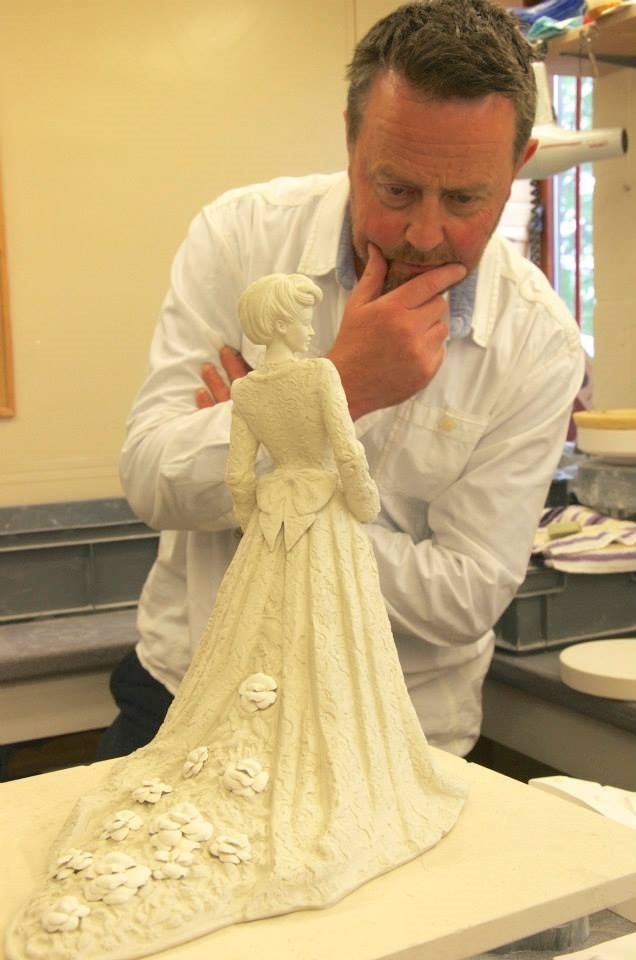 Peter Holland doing a final examination of his master sculpture, just before she's prepared for production
Peter Holland doing a final examination of his master sculpture, just before she's prepared for productionFine china sticks around. We humans don't. This makes it historically interesting, even though, yes, it goes in and out of fashion. If nothing else, is an amazing insight into the past - like going through the portal of a time machine.
The passion we have for fine china, porcelain, bone china and stone china is rooted in its jewel like decoration. The millennial generation and their younger counter parts 'Generation Z', are turn their heads back to their Granny's china as an oasis of beautiful intricacy, amongst all the grey minimalism. Some if us have always kept a sideways glance at this unique and fascinating art form, never wanting it to go away.
This website began as a guide to figurines sculpture, but then, it expanded - and then some!
The three fine china UK factories I mainly worked with are Royal Doulton, Royal Worcester and Coalport. Some of the best work I did in collaboration with Compton & Woodhouse holds its value and still sells for £200-£700. My early work (pre-Compton & Woodhouse) can be snatched up for a bargain price of £25-£40 - keep an eye out.
So Here's What this Figurines & Sculpture Website is all About:
Who made your antique china? And what pottery marks identify the makers? And also how do we find antique china values? What's it worth? And how future antiques are made. We have lots of interaction with you, the website visitors (on the forums & discussions) -
That's my website. Join me. It's fun.
How this website blends information
I am grateful for the help I have had from site visitors in developing this site. For example, they asked me to help with getting their stuff valued by trusted professionals.
I am considered a clay sculpting expert, but I am pretty fanatical about the history of fine china.
The identification section is about obscure pottery markings. This is where visitors send in their queries and we can all get together as a community to help with the answers.
Why have I made this amazing wiki?
I am interested in the subject, and love to help people by sharing my knowledge.
Below is a couple of recent sculptures I did. They sold out pretty quick. Thanks to this website....
Some of My Figurines & Sculpture Examples
You will find more information about my clay sculpture work and collaboration with the famous name prestige UK companies like Coalport, Royal Worcester and Royal Doulton elsewhere in a bit more detail on this website. For now here is a look at the work I did within my own company called 'The Figurine Collective'.
This work is becoming more and more collected as time goes on, as it was the brainchild of myself and fellow sculptor John Bromley. It was all guaranteed to be made in the pottery hubs of Worcester and Staffordshire at a time when the world was globalising and it was somehow okay (not for me) to produce classical 'English' fine bone china in the Far East.
The output of the Figurine Collective was made by the top artisans the UK had at its disposal. It was pristine, and very expensive, made in tiny editions. Frankly, it was the very best. I am being contacted by collectors almost begging for items. However, the doors are closed.
Here are some of my sculpts prior to being decorated:-
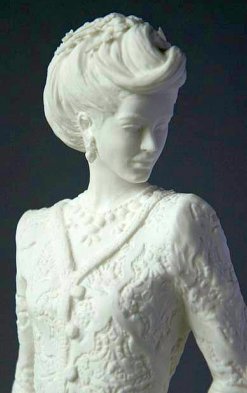 |
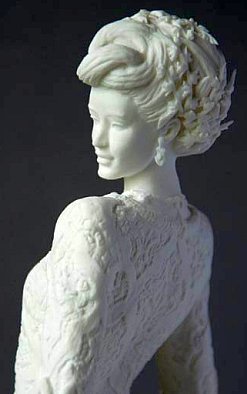 |
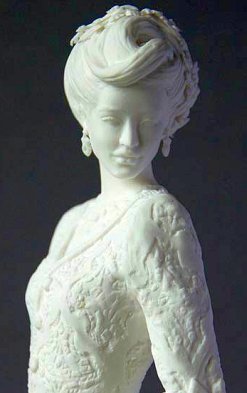 |
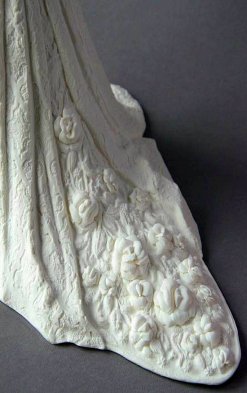 |
What Makes Fine China So Appealing?
Apart from being hard to make, its longevity imparts a sense of heritage.
Things have to stay around long enough to become antique - and people have to like them enough to collect them and pass them on.
Fine china comes into that category, particularly bone china. Figurines sculpture in porcelain have always been collected, and always will be.
That is, despite fashions coming and going.

Inherited a china set?... Download my free 7-point checklist to instantly assess its potential value.
From the Studio
• Peter Holland Posters
• Sculpture Studio
